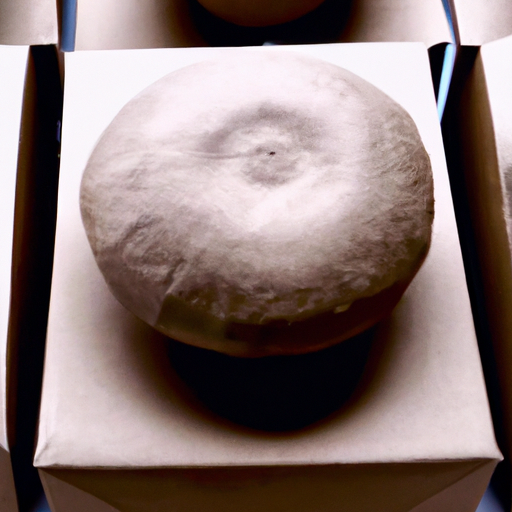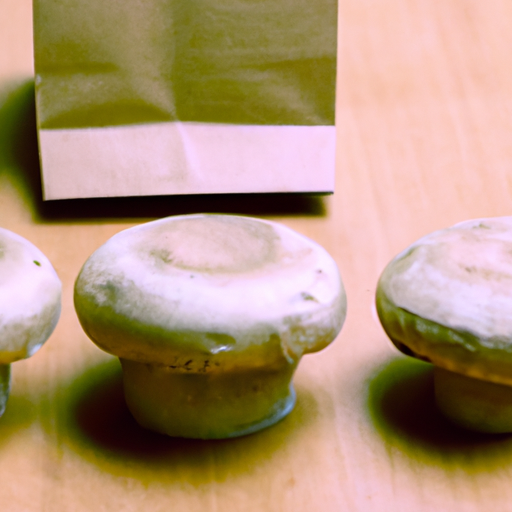
-
Table of Contents
Eco-Friendly Packaging Innovations: From Seed Paper to Mushroom Packaging

As the world becomes more conscious of the environmental impact of human activities, industries are increasingly seeking sustainable alternatives to traditional practices. One area that has seen significant innovation in recent years is packaging. Eco-friendly packaging solutions not only reduce waste and carbon emissions but also provide valuable marketing opportunities for businesses. In this article, we will explore some of the most exciting eco-friendly packaging innovations, from seed paper to mushroom packaging, and discuss their benefits and potential applications.
1. Seed Paper: Planting the Seeds of Sustainability
Seed paper, also known as plantable paper, is a unique and eco-friendly packaging material that is embedded with seeds. This innovative solution allows consumers to plant the paper after use, transforming it into a living plant. Seed paper is typically made from recycled paper pulp mixed with seeds from various plants, such as wildflowers, herbs, or vegetables.
Benefits of seed paper packaging:
- Reduces waste: Instead of being discarded, seed paper packaging can be repurposed and contribute to the growth of new plants.
- Enhances brand image: Companies that use seed paper packaging demonstrate their commitment to sustainability, which can attract environmentally conscious consumers.
- Creates a memorable experience: Planting seed paper can be a fun and interactive activity for consumers, leaving a lasting impression of the brand.
Case study: Botanical PaperWorks
Botanical PaperWorks, a Canadian company, specializes in producing seed paper products. They offer a wide range of seed paper packaging options, including seed paper boxes, bags, and tags. One of their successful collaborations was with a cosmetics brand that wanted to align its packaging with its natural and organic product line. By using seed paper packaging, the brand not only reduced its environmental impact but also created a unique and memorable unboxing experience for customers.
2. Edible Packaging: Tackling Plastic Waste
Plastic waste is one of the most pressing environmental issues of our time. To combat this problem, researchers and entrepreneurs have been developing edible packaging solutions that eliminate the need for traditional plastic materials.
Edible packaging can be made from a variety of natural ingredients, such as seaweed, starch, or even fruit peels. These materials are biodegradable, compostable, and safe for consumption.
Benefits of edible packaging:
- Reduces plastic waste: Edible packaging eliminates the need for single-use plastic materials, reducing the amount of plastic waste that ends up in landfills and oceans.
- Safe and healthy: Edible packaging materials are typically made from natural ingredients and are safe for consumption, providing a healthier alternative to traditional packaging.
- Encourages innovation: The development of edible packaging solutions encourages innovation in the packaging industry, driving the creation of new materials and technologies.
Case study: WikiFoods
WikiFoods, a company founded by Harvard professor David Edwards, has developed a range of edible packaging solutions. One of their notable products is the WikiPearl, a fruit-based shell that encapsulates ice cream, yogurt, or other soft foods. The WikiPearl eliminates the need for single-use plastic packaging and provides a convenient and mess-free way to consume food on the go.
3. Mushroom Packaging: Nature’s Sustainable Solution
Mushroom packaging, also known as mycelium packaging, is a biodegradable and compostable alternative to traditional packaging materials. It is made from the root structure of mushrooms, called mycelium, which acts as a natural adhesive and binding agent.
The process of creating mushroom packaging involves growing mycelium on agricultural waste, such as corn husks or sawdust, in molds of various shapes and sizes. The mycelium binds the waste together, forming a solid and durable packaging material.
Benefits of mushroom packaging:
- Biodegradable and compostable: Mushroom packaging breaks down naturally, reducing waste and minimizing environmental impact.
- Lightweight and versatile: Mushroom packaging can be molded into various shapes and sizes, making it suitable for a wide range of products.
- Carbon negative: The production of mushroom packaging requires minimal energy and emits fewer carbon emissions compared to traditional packaging materials.
Case study: Ecovative Design
Ecovative Design, a New York-based company, is a pioneer in the field of mushroom packaging. They have developed a patented process called MycoComposite™, which uses mycelium to grow packaging materials. Ecovative Design has collaborated with various companies, including Dell and IKEA, to create sustainable packaging solutions. For example, Dell used mushroom packaging for their servers, reducing the environmental impact of their product packaging.
4. Paper Foam: A Lightweight and Recyclable Alternative
Paper foam, also known as molded pulp, is a lightweight and recyclable packaging material made from recycled paper fibers. It is created by mixing paper pulp with water and forming it into various shapes using molds or machines.
Benefits of paper foam packaging:
- Recyclable and biodegradable: Paper foam packaging can be easily recycled or composted, reducing waste and promoting a circular economy.
- Shock-absorbent: Paper foam provides excellent protection for fragile items, making it suitable for shipping and transportation.
- Lightweight and cost-effective: Paper foam is lightweight, reducing shipping costs and carbon emissions associated with transportation.
Case study: Apple
Apple, the technology giant, has been using paper foam packaging for its products, such as the iPhone and iPad. The paper foam packaging not only provides adequate protection for the devices but also aligns with Apple’s commitment to sustainability. By using recyclable and biodegradable packaging materials, Apple reduces its environmental impact and sets an example for other companies in the industry.
Summary
Eco-friendly packaging innovations, such as seed paper, edible packaging, mushroom packaging, and paper foam, offer sustainable alternatives to traditional packaging materials. These solutions not only reduce waste and carbon emissions but also provide unique marketing opportunities for businesses. By adopting eco-friendly packaging, companies can enhance their brand image, attract environmentally conscious consumers, and contribute to a more sustainable future.
As consumer demand for sustainable products continues to grow, it is crucial for businesses to embrace these innovative packaging solutions. By incorporating seed paper, edible packaging, mushroom packaging, or paper foam into their operations, companies can demonstrate their commitment to the environment and differentiate themselves in the market. The future of packaging lies in these eco-friendly alternatives, and it is up to businesses to embrace the change and drive the transition towards a greener and more sustainable world.
